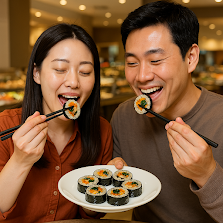🍳 1. The Nutritional Powerhouse: Why Eggs Are on Every Table
The egg is a staple ingredient found on almost every dining table worldwide. Because it contains all the essential nutrients a hen needs to create life, it's often hailed as a "complete food," much like milk. From fried eggs to complex soufflés, their versatility makes them a favorite for quick and nutritious meals.
Egg’s Key Health Benefits: Eggs are rich in high-quality protein, essential vitamins, and minerals. Specifically, the choline and lutein found in eggs are known to support brain function and eye health. To fully reap these benefits, knowing how to handle them safely is crucial.
🦠 2. The Risk Factor: Understanding Salmonella Contamination
Eggs carry a risk of contamination from bacteria like Salmonella, a leading cause of food poisoning. It's essential to understand the two main ways this bacterium can affect eggs before they reach your kitchen.
Contamination on the Shell: When a hen lays an egg, fecal matter might transfer Salmonella onto the shell's exterior. If the egg is not cleaned properly, this bacteria can potentially penetrate the shell's porous surface and contaminate the inside.
Contamination Inside the Egg: More concerning is the possibility that the Salmonella bacterium may have entered the egg before the shell even formed, while the egg was still inside the hen. Since you cannot detect this contamination from the outside, consuming raw or undercooked eggs poses a significant health risk.
🧼 3. From Farm to Fridge: How Store-Bought Eggs Stay Clean
Most eggs you purchase in stores go through rigorous cleaning and quality assurance protocols. These are typically marketed as "washed eggs" or "graded eggs."
Cleaning and Sorting Process: Egg grading centers use purified or ozone water to thoroughly clean the shells. They then sort the eggs by size—such as jumbo, large, medium, or small—and prepare them for packaging.
The Critical Role of Cold Storage: These centers maintain the eggs at a cold temperature, typically 0–5°C (32–41°F), to inhibit bacterial growth. You must ensure you continue this cold chain by storing them at the same temperature as soon as they get home.
🚫 4. Should You Wash Eggs at Home? (Spoiler: The Answer is No)
Many people instinctively wash eggs before cooking them, but this practice can actually increase the risk of contamination.
Destroying the Natural Defense: The eggshell has a natural, protective layer called the cuticle (or bloom) that seals its microscopic pores and prevents external bacteria from entering.
Encouraging Bacterial Entry: Washing the egg with water removes this protective layer. The water, mixed with potential bacteria on the surface, can then be drawn into the egg's interior as it cools or dries, significantly increasing the danger of contamination.
The Safe Approach: Instead of washing, simply wipe the shell gently with a clean, dry cloth or paper towel just before use. Then, place them immediately back into the refrigerator.
🌱 5. Making Safer and Ethical Egg Choices
Modern consumers often look beyond just price, prioritizing animal welfare and eco-friendliness when choosing eggs.
Animal Welfare Certified Eggs: Look for eggs from farms that provide hens with adequate space for movement, rest, and natural behaviors. These standards generally result in less stressed, healthier birds and can be identified by specific Animal Welfare Certification labels.
Choosing Sustainable Options: In many countries, antibiotic-free eggs are common. Organic eggs—which come from hens fed certified organic feed and raised under strict conditions—offer the highest standard of eco-friendliness, though they are often produced by a smaller number of farms.
🌡️ 6. The Cooked Solution: Eliminating Salmonella
Salmonella food poisoning can cause severe symptoms, including diarrhea, fever, and abdominal cramps. Since Salmonella is highly sensitive to heat, thorough cooking is the most effective way to prevent infection.
Cook Thoroughly: You should cook eggs until both the yolk and the white are firm. Cooking eggs to an internal temperature of 71°C (160°F) or higher effectively kills the Salmonella bacterium.
Caution with Raw Dishes: Avoid recipes that call for raw or lightly cooked eggs, such as runny yolks, homemade mayonnaise, or certain sauces. If such recipes are necessary, ensure you use only pasteurized eggs.
🔪 7. Preventing Cross-Contamination in Your Kitchen
It's not just eggs; raw meat and even some fresh produce can carry bacteria. You must take steps to prevent cross-contamination, where germs spread from one item to another.
Separate Cutting Surfaces: Use separate knives and cutting boards for handling raw meat and poultry versus fresh fruits and vegetables. This keeps pathogens from moving between food types.
Clean Hands and Surfaces: Always wash your hands thoroughly with soap and water after handling any raw ingredients, including eggs. Ensure all kitchen surfaces, utensils, and countertops are cleaned and sanitized regularly.
✅ 8. Essential Egg Safety Checklist
To maximize the benefits of eggs while minimizing risks, follow these simple guidelines for storage and preparation:
Buy from Reputable Sources: Choose eggs with clear labels and always check the expiration date.
Do Not Wash Eggs: Wipe gently with a dry cloth instead of washing with water.
Refrigerate Promptly: Store eggs in the main body of the refrigerator at 0–5°C for consistent cold temperature, avoiding the door.
Cook Until Firm: Always cook eggs until the yolk and white are solid.
Use Pasteurized Eggs for Raw Dishes: If a recipe requires raw eggs, use a commercially pasteurized product.

































.png)







.jfif)